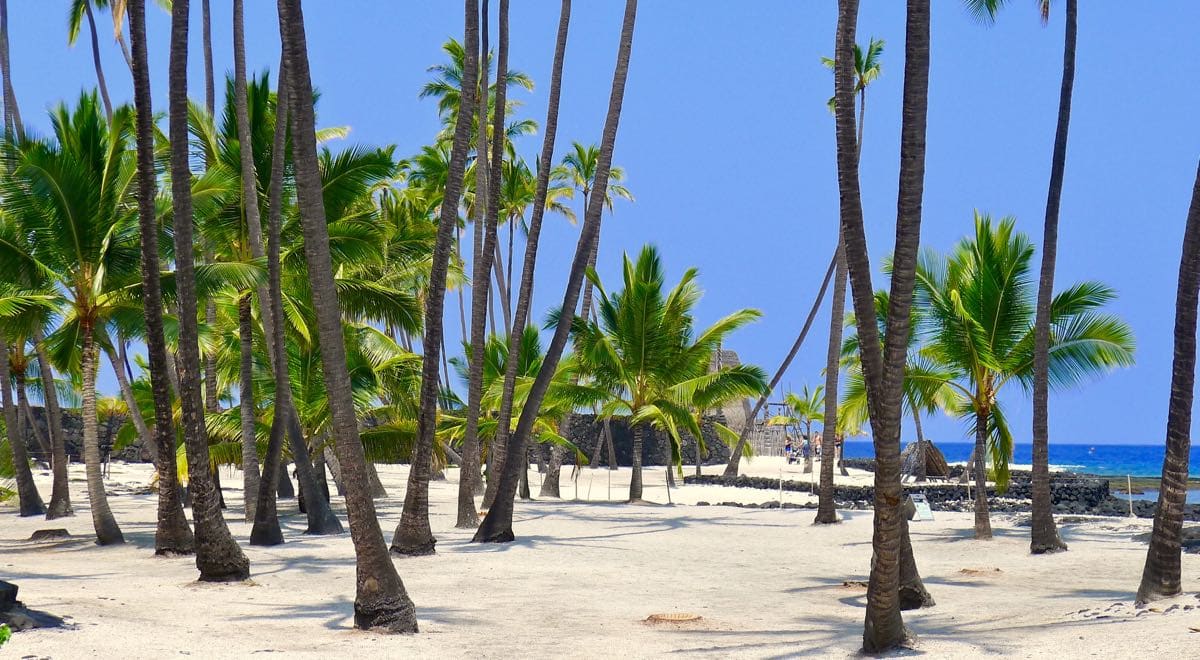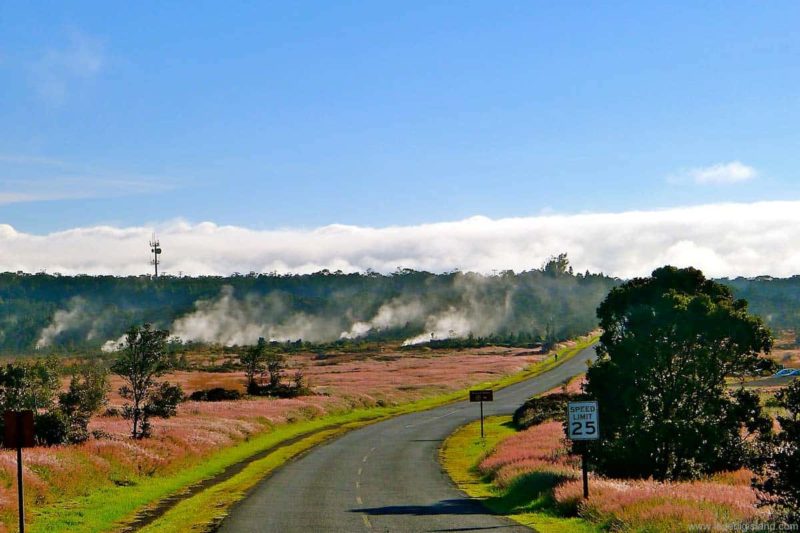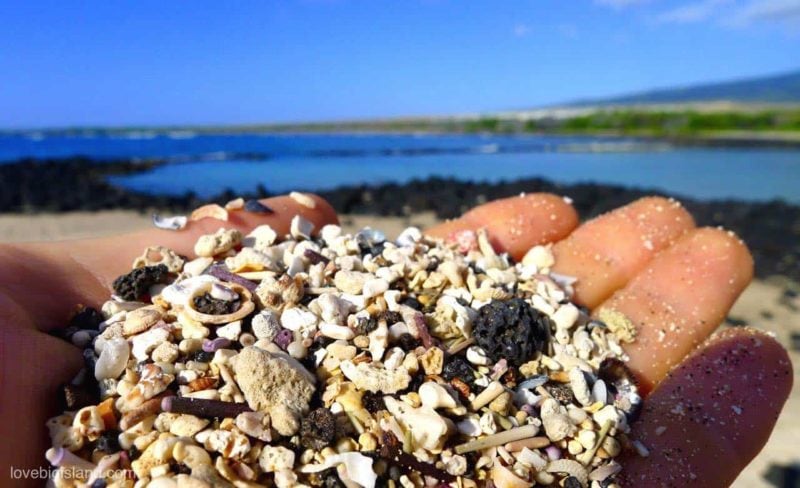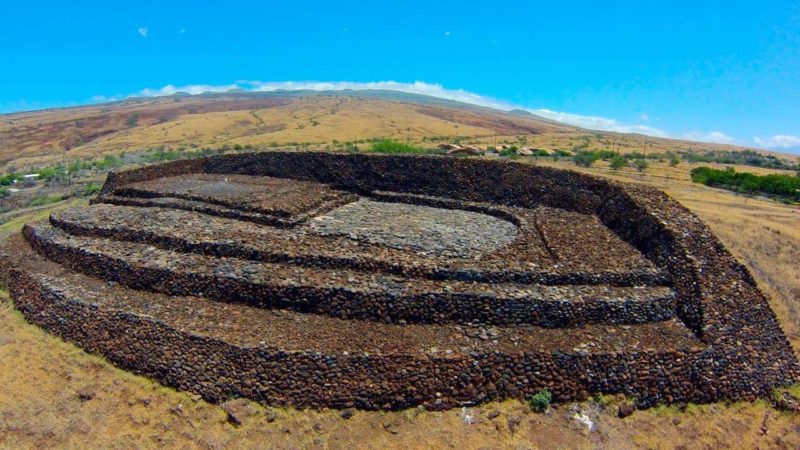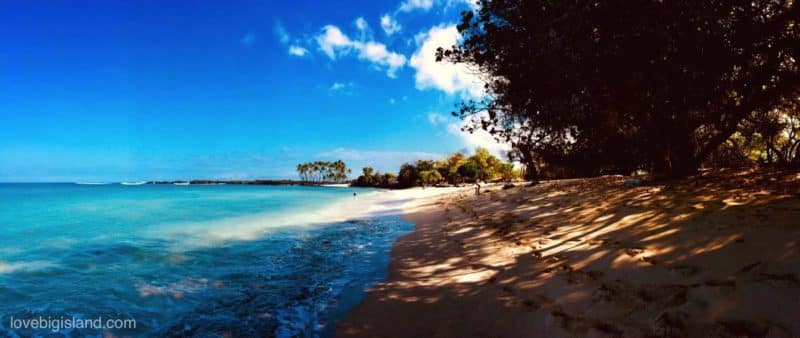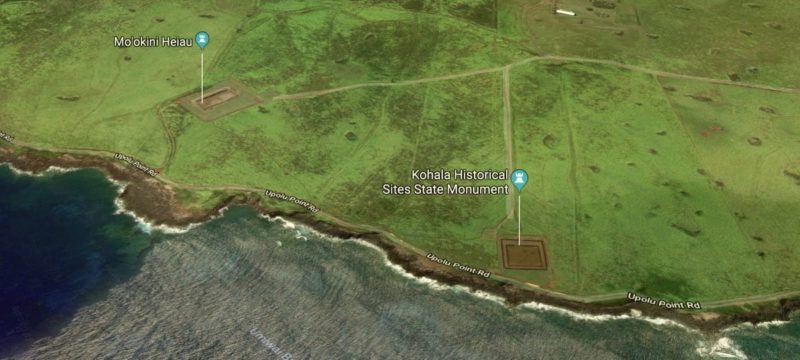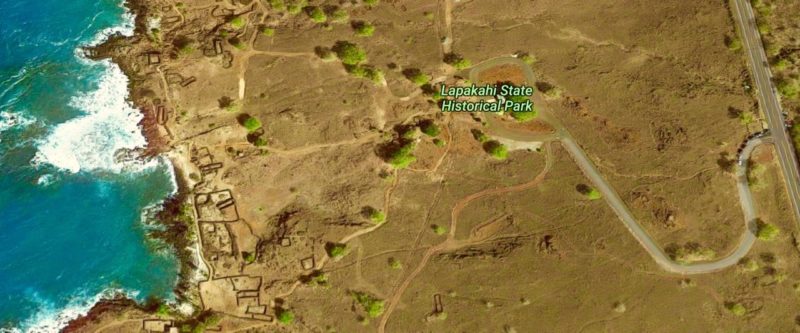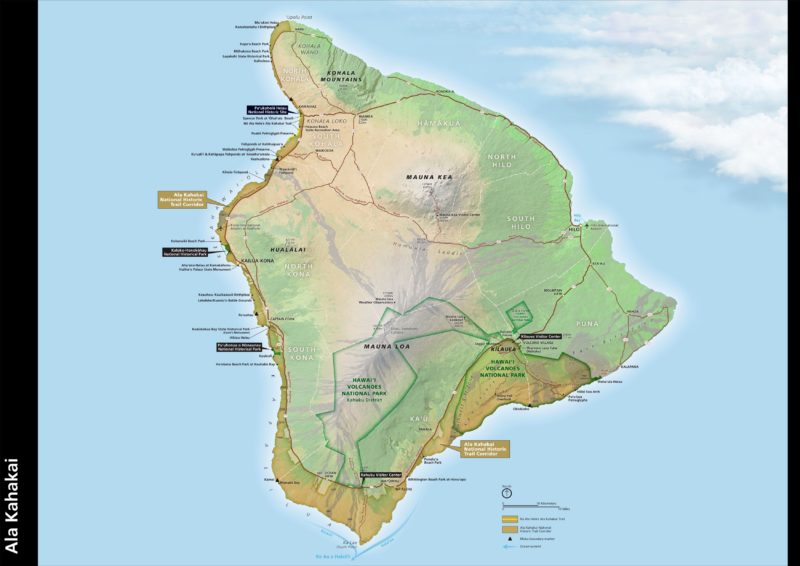The Big Island is a place with incredible natural beauty and a rich cultural history and we are not surprised that 4 (out of 5) of the National Parks in Hawaii are on our island. Next to those we also host 14 state parks and a 175 mile (282 km) national historic trail.
You can find a summary of all those national and state parks on this page:
Table of contents
- Map of all parks on the Big Island
- List of 4 National Parks
- List of 14 State Parks
- The Ala Kahakai National Historic Trail
Table of Contents
- Map of all parks on the Big Island
- List of 4 National Parks
- List of 14 State Parks
- The Ala Kahakai National Historic Trail
Exploring our parks is guaranteed to give an extra dimension to your stay here on the Big Island!
Map of National and state parks
Most parks are evenly spread along the coast of the island, while some (most notable the Hawaii Volcanoes National Park) can be found further inland. The following map shows the locations of the state and national parks on the Big Island:
National Parks
There are five national parks in the state of Hawaii (four of which are on the Big Island) and each of them is worth a visit. Our national parks were established to preserve the island history and natural wonders which means that they are excellent sites to explore, to learn about, and to see, the natural treasures of the Big Island.
The four national parks on the Big Island are:
The two National Parks in the state that are *not* on the Big Island are:
- The gorgeous Haleakalā National Park on Maui, and
- The interesting but very difficult to reach Kalaupapa National Historical Park on Molokaʻi.
1: Hawaii Volcanoes National Park
This National park located between Hilo and Kona on the southern flanks of the Kilauea and Mauna Loa volcano is both for locals and for tourists by far the most popular attraction on the Big Island. It also is one of the few places on this planet where you can safely watch an active volcano (Kilauea) up, close and personal.
According to us and many others this park is the one “must-see” destination on the Big Island. You can find an in depth guide for the Hawaii Volcanoes National Park on our website.
Opening hours – Daily: 7:45 a.m. to 5 p.m. (Kilauea Visitor Center), 10 a.m. to 9 p.m. (Ranger station, chain of craters road)
The Kahuku unit
In 2003 a new 116,000 acre section of the park was acquired: the Kahuku unit. It is located in the Kaʻu district about halfway between Kona and the Hawaii Volcanoes National Park and boasts some beautiful hikes. Read more about the Kahuku unit on our website.
2: Puʻuhonua o Honaunau National Historical Park
Puʻuhonua means “place of refuge”: this is the site where Hawaiians that broke a kapu (law) fled to avoid punishment. Warriors that were defeated during battle also sought refuge here.
The park contains numerous archaeological sites: from temple platforms and royal fishponds to the “Hale o Keawe”, a reconstructed Hawaiian temple.

The Puʻuhonua o Hōnaunau park has a definite tropical feel: it is filled with white sand and coconut palms!
The park is located in the middle of the tropical and lush Kona coffee belt and is very close to two of the best snorkeling spots on the Big Island. This makes it a great place to combine learning about native Hawaiian customs with a snorkeling trip and/or a visit to a Kona coffee farm.
Read more about visiting this park in our in-depth guide to the Puʻuhonua o Honaunau National Park and/or visit the official park website.
Opening hours: Daily 8 a.m. to 5 p.m. (Visitor Center).
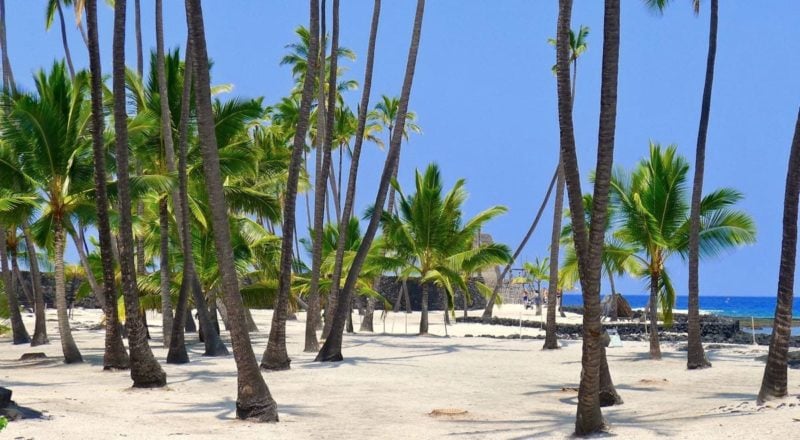
Puʻuhonua o Honaunau National Park on the Big Island of Hawaii is a good place to take in Hawaiian History. Next door (300 feet from the park entrance) is one of the best places of the island to go snorkeling
3: Kaloko-Honokohau National Historic Park
This park protects an ancient Hawaiian settlement. It contains partitions of the typically Hawaiian ahupuaʻa (land divisions that divided the land into zones between the mountain and ocean). You can also find ancient kiʻi pohaku (petroglyphs or rock engravings), kahua (housing platforms), holua (stone slide) and heiau (a place of worship) here.
Opening hours – Daily 8:30 a.m. to 4 p.m. (Hale Ho’okipa Visitor Center)
Visit the official park website.
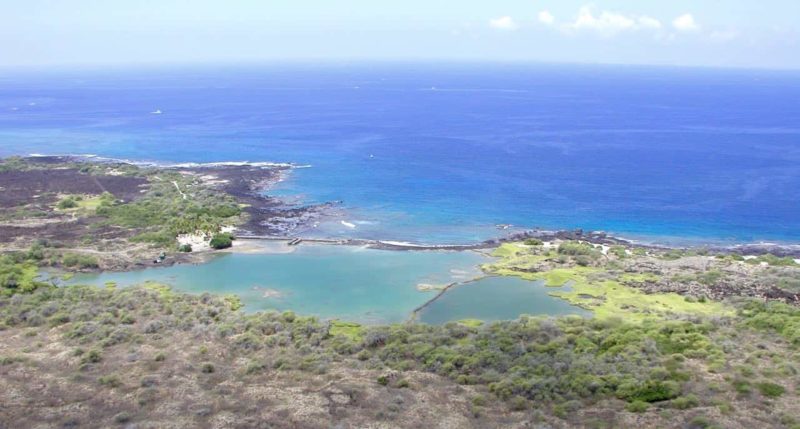
Aerial view of the Kaloko Fishpond in the Kaloko-Honokōhau National Historical Park from the east. Image credit: NPS
A big bonus to the Koloko Honokohau park are the two beaches that are part of our shortlist of favorite Kona beaches: Honokohau and Aiʻopio beach. These two beaches combine into a 1-mile long sandy beach that never gets too busy. The water here is calm and there is plenty of shade. Perfect for a visit with small children.
Honokohau Harbor, directly below (south) of the park, is also a good spot to go snorkeling.
4: Puʻukohala Heiau National Historic Park
How many places in the USA do you know where you can walk in the footsteps of a king? As far as we know, this is the only one!
Kamehamea I build this place of worship around 1790 and dedicated it to the war god Kūkaʻilimoku. After having build the temple he set out to conquer the neighboring islands, in which he succeeded. This was the first time that the Hawaiian islands were united under one king: King Kamehamea I!
Opening hours – Daily 7:30 a.m. to 4 p.m. (Visitor Center)
Visit the official website.
State Parks
The Hawaiʻi’s State Park System is composed of 51 state parks state wide, 14 of which you can find on the Big Island. The parks offer varied outdoor recreation and cultural/heritage opportunities and range from landscaped grounds with developed facilities to rugged natural areas with trails and primitive facilities.
The 14 state parks on the Big Island are:
You can find more information about the state park system on the Hawaiʻi State Parks website (external link).
1: ʻAkaka Falls State Park (Hamakua Coast)
Just north of Hilo this is a great stop for anyone driving past the Hamakua coast. The 422 ft tall ʻAkaka Falls are the main attraction of this park and are reachable through an easy half mile walk. Waterfall enthusiasts also can try to see if they can spot the 400 ft Kahūnā falls.
- Opening hours: The vehicle gate/parking area is open from 8:30 am to 6 pm. The park is open to walk-ins between sunrise and sunset.
- Entrance fee: $10.00 per car and $5 per person for non residents. No charge for Hawaii residents.
- Hiking: Yes! The 0.4 mile ʻAkaka falls loop trail.
- Website: We love this place and have written plenty about the ʻAkaka falls on our website. See also the DNLR website.
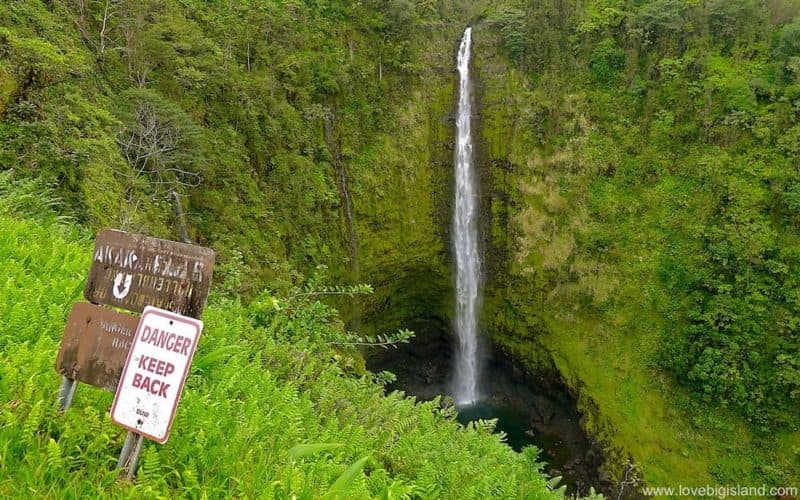
The 422 ft. tall ʻAkaka falls on the Big Island of Hawaii are a pleasant stop on your way to or from Hilo
2: Hāpuna Beach State Recreation Area (Kohala)
This is a landscaped beach park on the sunny Kohala coast close to where all the resorts are. There is good swimming during calm seas and bodysurfing during periods of shore breaks. This beach park hostst one of the most popular white sand beaches of the island.
- Hours: 7:00 am to 8:00 pm, daily.
- Entrance fee: $5 per visitor vehicle parking fee.
- Hiking: Yes! The Kawaihae-Anaehoomalu part of the Ala Kahakia trail (see also below)
- Camping/lodging: Yes! There are 4 person A-frame cabins for rent, reservations only! More info.
- Beach: One of the most beautiful white sand beaches in the state: Hapuna Beach.
- Website: See the link above for information about the beach, or see information about the state park on the DNLR website.
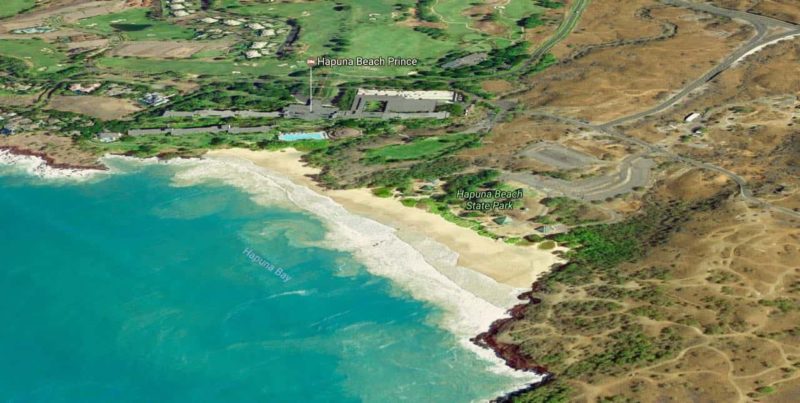
Overview of Hapuna Beach and Hapuna bay. The Mauna Kea Golf course is visible on the left, together with the Hapuna Beach Prince Hotel. Image from google maps.
3: Huliheʻe Palace (Kona)
The Huliheʻe Palace in downtown Kona once was a summer vacation home for Hawaiian royalty. Today it is a museum showcasing Victorian artifacts from the era of King Kalākaua and Queen Kapiʻolani.
- Hours: Monday through Saturday from 9 am to 4 pm. Closed on major holidays.
- Entrance fee: $8 – $10 for adults, $ 1 for children, and $6 – $8 for kamaʻāina (residents)
- Historic site: Yes! Guided tours are offered for a fee and there is a gift shop.
- Website: more information on the DNLR website.
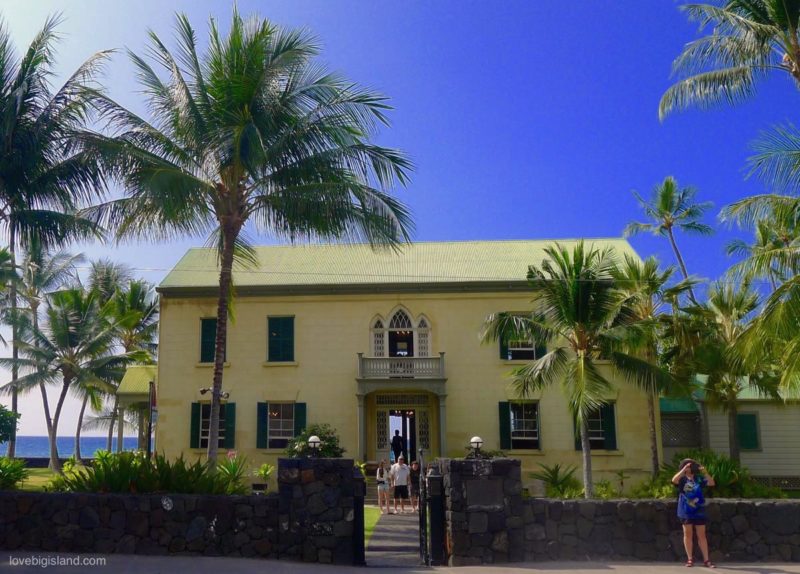
The Huliheʻe Palace in Kailua-Kona is a former vacation home of Hawaiian royalty that now is converted to a museum showcasing furniture and artifacts.
4: Kalōpā State Recreation Area (Hamakua Coast)
This is a park that showcases a native ‘ohi’a forest at a 2000-foot elevation. An easy nature trail and camping are available on site.
- Hours: Daily During Daylight Hours
- Entrance fee: None
- Hiking: Yes! The 0.7 mile Kalopa Nature loop trail.
- Camping/lodging: Reservation only, both cabins and campsites. More information.
- Website: Kalōpā State Recreation Area on the DNLR website.
5: Kealakekua Bay State Historical Park (Kona)
Kealakekua Bay is a state and a marine life conservation district, and is one of the best places in the state to go snorkeling. This is the site of the first extensive contact between Hawaiians and Westerners with the arrival of Captain Cook in 1779, and also the place of his demise.
In the park you can see Hikiau Heiau, a traditional religious site, and the Captain Cook monument at a distance across Kealakekua Bay.
- Hours: Daily During Daylight Hours
- Entrance fee: None
- Hiking: The Captain Cook monument is reachable via the historic Ka’awaloa Trail.
- Historic site: Yes! read more about the meaning of this place in the park brochure.
- Official website: DNLR website.
- In-depth guide on our website: Kealakekua Bay
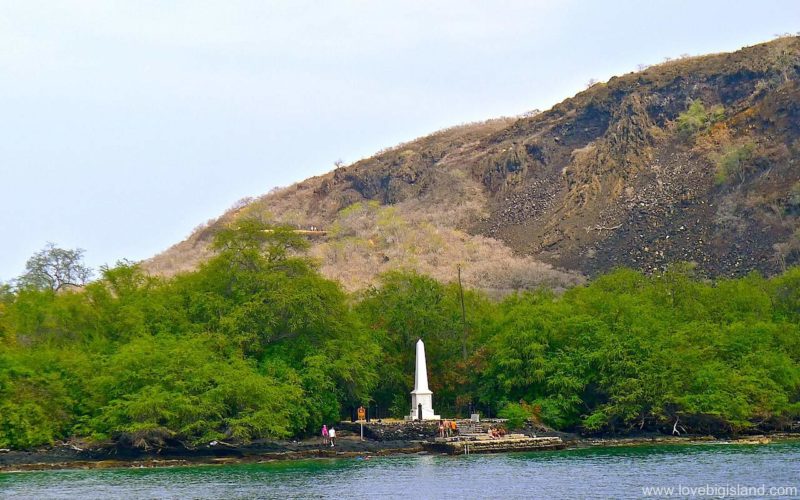
The best snorkeling in Kealakekua bay is around the Captain Cook monument, but getting there is difficult. The most easy option is to book a snorkeling tour.
6: Kekaha Kai State Park (Kona)
This park is home to some of the most beautiful and inaccessible beaches on the Big Island.
The Mahaiʻula section has a sandy beach and a picnic area with tables. A 4.5-mile hike north through this wilderness park on the historic coastal trail, Ala Kahakai, leads to Kua Bay. Midway, a hike to the summit of Puʻu Kuʻili, a 342-foot high cinder cone, offers an excellent view of the coastline.
- Hours: Open daily 8 am –7 pm
- Entrance fee: none
- Hiking: yes, an access trail linking together a string of pristine white sand beaches. Note that the trail is dry and hot and no drinking water is provided!
- Beach: This beach park is home to some of our favorite beaches!
- Website: Kekaha Kai DNLR website.
7: Kīholo State Park Reserve (Kona)
This is a stark, lava-covered coastal park with small bays, sparsely vegetated coastline, historic lava flows, and wide open spaces. The park facilities are basic (restrooms and trash cans, no water).
- Hours: April 1 to Labor Day: 7 am to 7 pm. After Labor Day to March 31: 7 am to 6 pm
- Entrance fee: none
- Camping/lodging: Camping is allowed for a fee on weekends with reservations only. More info.
- Beach: Of course :) There is a beautiful salt-and-sweet water bay with good swimming. If the tide is out the bay is dotted with tide pools that are perfect for snorkeling.
- Website: DNLR website.
8: Kohala Historical Sites State Monument / Moʻokini Heiau (Kohala)
This is the birthsite of the greatest king hawaii has ever known: Kamehameha I. The park is a National Historic Landmark that also includes Moʻokini which is one of the most famous luakini heiau (sacrificial temples) on the island.
- Hours: Open daily 9 am-8 pm, closed Wednesdays.
- Entrance fee: None.
- Historic site: Yes! This is the birthplace of king Kamehameha I.
- Website: DNLR website.
9: Lapakahi State Historical Park (Kohala)
The Lapakahi State Historical Park contains the partially restored remains of an ancient Hawaiian coastal settlement that you can explore as part of a 1.1 mile self-guided interpretive trail. This is also a great place to see whales during whale season (November to May).
Lapakahi is one of five Marine Life Conservation Districts on the Big Island, which means that marine life here is protected to the greatest extent possible and thus that there is great snorkeling! You can find good coral growth and a remarkable diversity of fish species mostly at the south end of the bay.
Read more about snorkeling here on our website and about the Lapakahi MLCD on the DNLR website.
- Hours: Open daily 8 am-4 pm, closed State Holidays
- Entrance fee: None
- Hiking: Yes! The 1.1 mile Lapakahi Village Interpretive loop trail.
- Historic site: Yes! Read all about this park in the Lapakahi park brochure.
- Website: DLNR website.
10: Lava Tree State Monument (Puna)
This park protects an excellent example of a forest of lava trees along an 0.7 mile loop trail. Lava trees are an unusual volcanic feature and are the result of a lava flow that swept through this forested area and left behind lava molds of the tree trunks. Picnicking opportunities.
- Hours: Daily During Daylight Hours
- Entrance fee: None.
- Hiking: Yes! a 1.1 mile loop trail that showcases lava trees.
- Website: DNLR website.
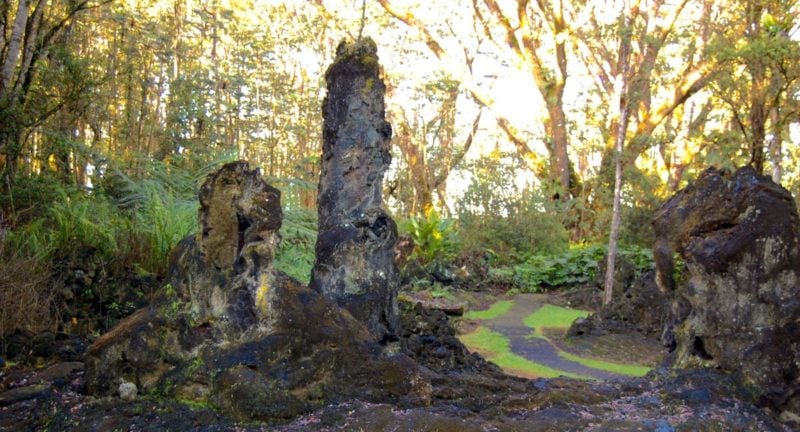
Lava trees are the result of a lava flow that swept through this forested area and left behind lava molds of the tree. By Sean A. Clevenger [CC BY-SA 3.0 (https://creativecommons.org/licenses/by-sa/3.0)], from Wikimedia Commons
11: MacKenzie State Recreation Area (Puna)
This park showcases a wild volcanic coastline with low cliffs and picnicking in an ironwood grove. Very close to lava flows from the 2018 Kilauea LERZ eruption and possibly home to new black sand beaches, this state park has a violent past and a sometimes spooky vibe. It is no surprise to us then that it got voted as most spooky place on the Big Island in 2023.
- Hours: Daily During Daylight Hours
- Entrance fee: None
- Hiking: There is an old Hawaiian coastal trail that traverses the park.
- Website: Park DNLR website.
MacKenzie is also the best access point for Isaac Hale beach park (for the Pohoiki black sand beach).
12: Manukā State Wayside (Ka’u)
This park offers a rest stop with an opportunity to picnic among a collection of native and introduced trees. Also home to an arboretum (a botanical garden for trees)
- Hours: Daily During Daylight Hours
- Entrance fee: None
- Hiking: A 2-mile nature hike through the adjacent Manukā Natural Area Reserve
- Camping/lodging: Yes, camping with reservation only. More info
- Website: This is one of our highlighted stops in the Kau district. See also the DNLR website
13: Wailoa River State Recreation Area (Hilo)
Small and landscaped park set around Wailoa River in downtown Hilo. The Wailoa center which is contained within the park contains two galleries which host month-long art and cultural exhibits – both are free and open to the public.
- Hours: Daily During Daylight Hours
- Entrance fee: None
- Website: DNRL website
14: Wailuku River State Park (Hilo)
The Wailuku state park in Hilo contains two separate park areas: Boiling pots and Rainbow falls. The parks offer viewpoints of geologic and scenic interest along Wailuku River.
Boiling Pots is a succession of large pools connected by underground flow or (small) waterfalls, lined with exposed hexagonal columns that were formed by the slow cooling of basalt lava. The 80-foot Rainbow Falls is renowned for the rainbows formed from its mist on sunny mornings.
- Hours: Daily During Daylight Hours
- Entrance fee: None
- Website: Rainbow falls is our favorite drive-in waterfall, more information on both locations on the DNLR website.
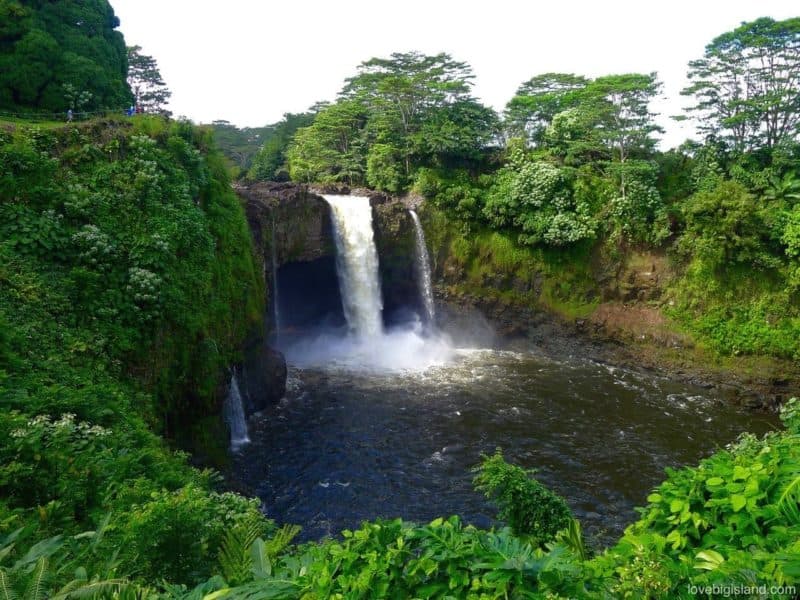
The volume of the rainbow falls (or Waianuenue) changes on a daily basis. This is what the falls look like after a good rain upstream
The Ala Kahakai National Historic Trail
The Ala Kahakai trail was designated in 2000 for the preservation, protection and interpretation of traditional Native Hawaiian culture and natural resources. It is a system of trails that are found within a 175 mile shoreline “corridor” from ʻUpolu Point on the north end of Hawaiʻi island, along the western coast through Kohala and Kona and Ka’ū, then east along the southern coast in Puna to the eastern boundary of Hawaiʻi Volcanoes National Park
> Official NPS website: Ala Kahakai.
> Website of Ala Kahakai Trail association.
The exact layout of the historic Ala Kahakai Trail has been lost in time, and many parts now are short segments of other Big Island trails that cross through public and private lands. Currently only a few parts of the trail are being maintained, most notably a part along the Kohala coast and several parts within the 4 national parks:
Accessible parts of the Ala Kahakia Trail
Note: the trail is not yet open as a national historic trail. The policy of the Ala Kahakai Trail association is to open and make trails public as community-based management plans are established, in place and implemented. Many sections of the trail have not been able to have that happen yet. The following parts of the trail are currently most accessible:
A 15-mile State managed Ala Kahakai in South Kohala is open to the public between Spencer Beach Park at Ohaiʻula in Kawaihae and ʻAnaehoʻomalu Bay. You can find this part on the map below and read more information on this part of the trail on the official HawaiiTrails website.
The coastal trails at all four National Parks are also open to the public. For more information on the trail contact the Na Ala Hele Trails & Access Specialist, Hawaiʻi Island, Department of Land & Natural Resources, 19 East Kawili Street, Hilo, Hawaii 96720 by telephone: 808 974-4217.
You can see the trail and the trail corridor on the following map (from source, size warning: linked file is 5.7 MB!):
